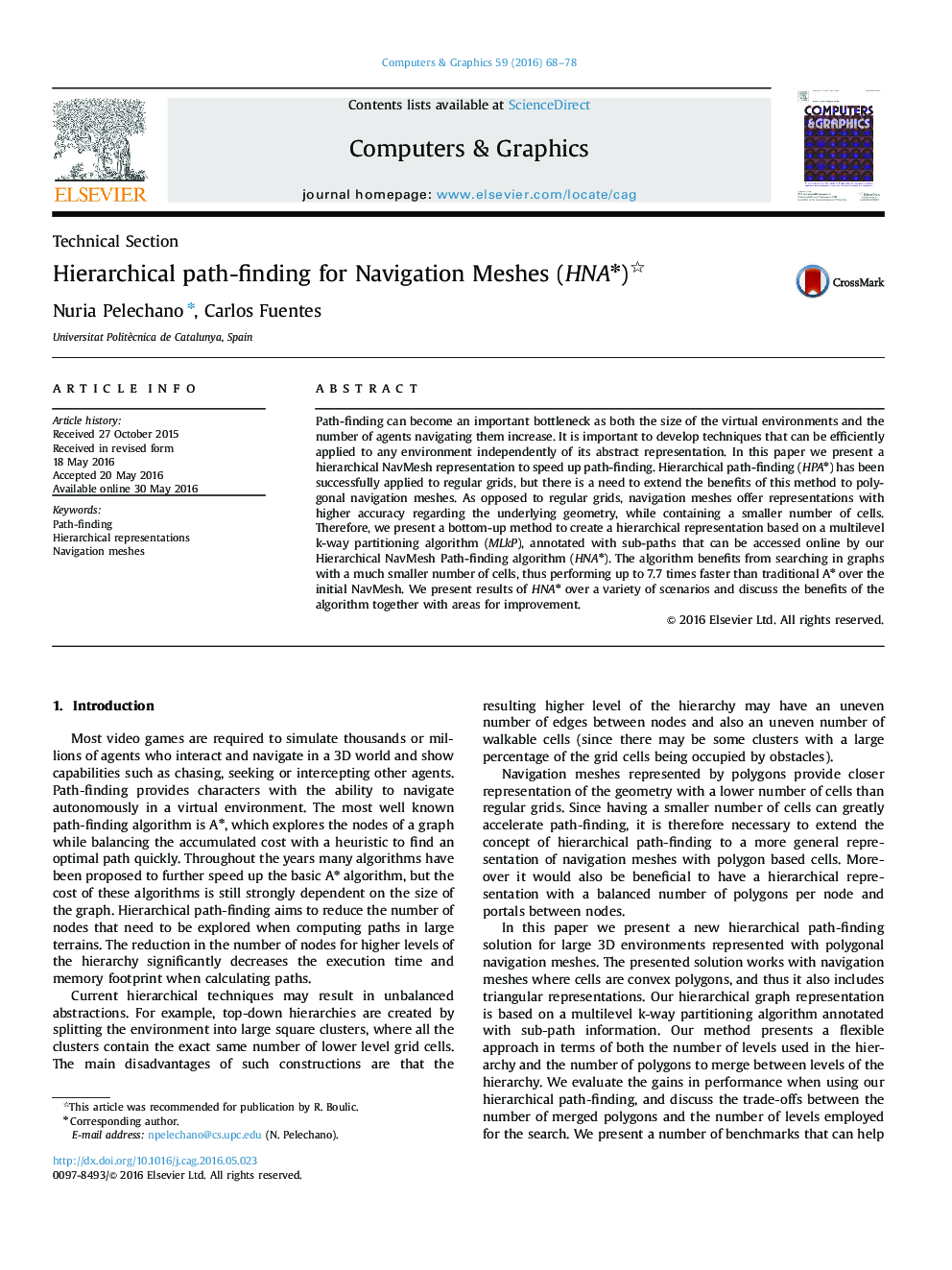| Article ID | Journal | Published Year | Pages | File Type |
|---|---|---|---|---|
| 441771 | Computers & Graphics | 2016 | 11 Pages |
•A bottom-up approach to build hierarchical navigation meshes over polygonal maps.•Partition with a good balance of number of cells and inter-edges.•Real-time path finding over hierarchical polygonal map representations.•Discussion of different benchmarks to evaluate the potential of our representation.
Path-finding can become an important bottleneck as both the size of the virtual environments and the number of agents navigating them increase. It is important to develop techniques that can be efficiently applied to any environment independently of its abstract representation. In this paper we present a hierarchical NavMesh representation to speed up path-finding. Hierarchical path-finding (HPA⁎) has been successfully applied to regular grids, but there is a need to extend the benefits of this method to polygonal navigation meshes. As opposed to regular grids, navigation meshes offer representations with higher accuracy regarding the underlying geometry, while containing a smaller number of cells. Therefore, we present a bottom-up method to create a hierarchical representation based on a multilevel k-way partitioning algorithm (MLkP), annotated with sub-paths that can be accessed online by our Hierarchical NavMesh Path-finding algorithm (HNA⁎). The algorithm benefits from searching in graphs with a much smaller number of cells, thus performing up to 7.7 times faster than traditional A⁎ over the initial NavMesh. We present results of HNA⁎ over a variety of scenarios and discuss the benefits of the algorithm together with areas for improvement.
Graphical abstractFigure optionsDownload full-size imageDownload high-quality image (230 K)Download as PowerPoint slide
